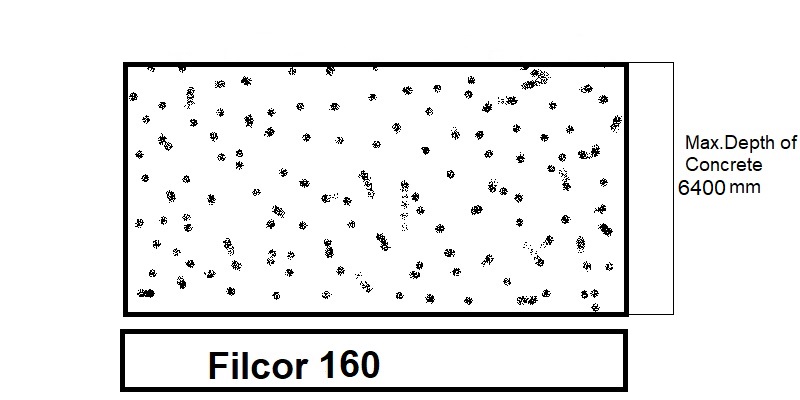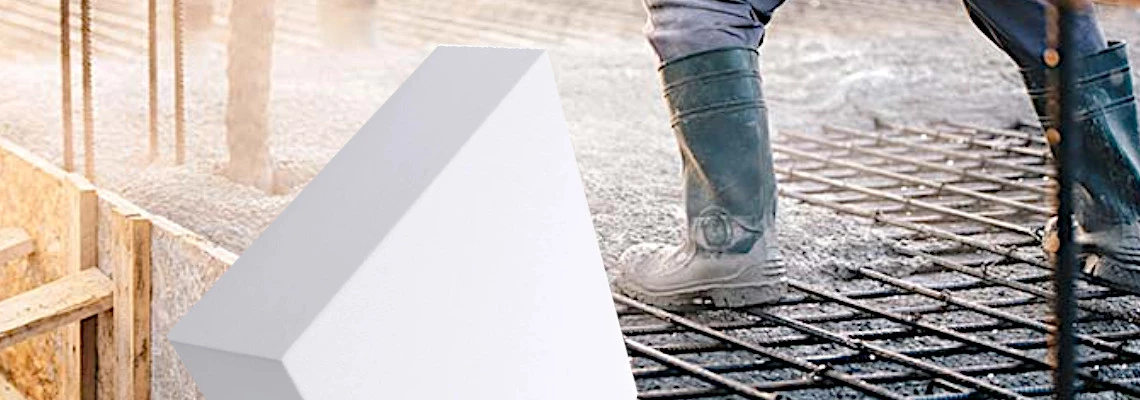
Breaking down Filcor*
If you read this article you probably don’t know what Filcor is. The variations of Filcor grades are not making this any easier. Moreover, you are probably interested to see a price list that will fit your budget. Right? All this may sound complicated but truly is not. We will do our best to dispel all your doubts.
First thing first, it is vital that you choose the right grade of Filcor for the soil type and application. Worth to mention, any errors on this stage could have serious ramifications and even involve a completed project being demolished. To help you determine what grade you need we have developed a 8min article with an easy graphic explanation.
What is Filcor?
Void former such as Filcor replaces traditional heavyweight construction materials. Those non-degradable void formers remain in their place for a long time. They are designed to be left in place after the concrete has been cast. They simply reduce the concrete use on the project and provide a cost effective alternative that can deliver the required compressive performance. They are produced from materials that are not degraded easily, like polystyrene.
For this reason, non-degradable Filcor is manufactured from EPS into bespoke shaped blocks to achieve the specified compression strength. However, polystyrene has to be bulkier than collapsible void formers. Although expanded polystyrene is more commonly used as a void former on construction sites because it is a low cost product.
Who makes Filcor?
Filcor is made by Cordek® company. Since company formation on 1973, Cordek® has provided technical solutions for a wide range of construction requirements. Innovative thinking and engineering expertise, enable manufacturer to provide the best quality solutions for ground works. Cordek® announced its Filcor void former for few reasons. First, of course is the availability in a wide range of grades to meet the requirements of BS EN 13163: 2012. Second is the fact that block can be manufactured to the required depth. It is mainly used as a airy material for forming openings and voids within concrete structures.
Filcor Grades
While there are 9 grades variables in Filcor, there are some standard thicknesses of concrete used for specific grades. The strength of your Filcor grade will affect the concrete depth. Stronger Filcor grades can withstand thicker slabs. This is because they will be able to resist the loads on them better than weaker grades of Filcor. When choosing right grade, number of other factors such as ground conditions soil type, trees and adjacent structures are important too.
Filcor Price List
The cost of manufacturing Filcor is considered linearly proportional to its density. Filcor 20 price is the lowest compared to the other Filcor grades: 40, 70, 90, 100, 120, 140, 160, 190.
For instance Filcor 45 2400x1200x150 size cost is £75. Filcor 20 cost as little as £50 for size 2400mmx1200mmx150mm
Pouring concrete at the right Filcor grade
Concrete depth is the major factor in determining a Filcor grade. Increasing grade from 20 to 190 will allow you for additional 6800mm of concrete. It will also boost your concrete capacity nearly 940%.
Standard Filcor grade?
Standard concrete slab thickness in residential construction is 4 to 5 inches. 5-6 inches is recommended if the concrete will receive occasional heavy loads such us caravans or 4x4’s. This is why Filcor 20 and Filcor 45 are often considered as a standard grade.
| Manufactured BS EN 14933:2007 | Filcor 20 | Filcor 45 | Filcor 70 | Filcor 90 | Filcor 100 | Filcor 120 | Filcor 140 | Filcor 160 | Filcor 190 |
|---|---|---|---|---|---|---|---|---|---|
| Compressive Strength at 1% Strain (kPa) | 20 | 45 | 70 | 90 | 100 | 120 | 140 | 160 | 190 |
| Nominal Density (kg/m3) | 15 | 20 | 25 | 30 | 35 | 40 | 45 | 50 | 55 |
| Thermal Conductivity Value + W/m K | 0.038 | 0.036 | 0.035 | 0.034 | 0.033 | 0.033 | 0.033 | 0.033 | 0.033 |
| Max Depth of Concrete (assumed 25kN/ m3) to not exceed Compressive Strength at 1% strain (mm) | 800 | 1800 | 2800 | 3600 | 4000 | 4800 | 5600 | 6400 | 7600 |
| Poisson's Ratio | 0.12 | 0.12 | 0.12 | 0.12 | 0.12 | 0.12 | 0.12 | 0.12 | 0.12 |
Filcor Physical Properties
As with any product, getting to know physical properties is relevant. You won’t have any nasty shocks further down the line and for this reason let’s break down Filcor grades.
Filcor 20

Filcor 20 maximum depth of concrete
All Filcor grades work on 1% compression figure.
Filcor 20 is the lightest grade available. Number 20 means compresive strength at 1% strain (kPa). If 100mm EPS cube is tested it will simply compress 1% of that 100mm depth.
Filcor 20 density is 15 kg/m3. This is exactly how much Filcor 20 physically weights in kg per m3. Although weight increases accordingly to its nominal density figure.
Filcor's ranging from 20 to 70 are easy to operate on site as they weight below 25kg per m3.
25 kg load being manually handled is considered to be a safe upper limit for the average man.
Thermal conductivity of Filcor 20 is 0.038W/mK. This is the rate at which heat energy passes through Filcor EPS and therefore the lower the value the better the material will insulate against heat loss. The lower the thermal conductivity of the Filcor the greater the material’s ability to resist heat transfer, and hence the greater the insulation’s effectiveness.
Filcor 20 has the highest thermal conductivity value although is considered having the worst thermal conductivity compering to other Filcor’s. For instance Filcor 190 has 0.033 W/mK.
Filcor 20 is classified and calibrated to withstand concrete depth of 800mm.
The time-dependent mechanical (creep strains) behavior of these products has been a topic of significant interest for many years. It is an essential parameter to be evaluated for compression deformation over a time. Void former compressive creep will normally be considered for application where continuous high loads are imposed on a structure supported by Filcor, like building foundations, which are subjected to the full design load for extended periods of time.
Therefore, Filcor 20 is also determined by its compressive creep, which relates to the theoretical deformation over time.
Filcor 20 has max. allowable long term stress of 21 kN/m3. With the increase in density of Filcor, creep deformation value decreases, whereas on low density of Filcor 20, it stays at 21 figure.
Filcor have a compressive creep deformation of 2% or less after 50 years, when subjected to a permanent compressive stress of 0.30 x 10% stress figure.

Filcor 20- Declaration of Performance
Project
Transport Scotland
“The decision was made to infill the tunnel with the cost-effective, lightweight infill material Filcor 20 Expanded Polystyrene (EPS) with a Flame Retardant (FR) additive. An additional benefit of this solution is that it would be reversible should the tunnel ever need to be re-commissioned at a later date.
The 420.0 m long, 4.3 m wide and 5.1 m high tunnel had previously been sealed off at both ends and the adjacent cuttings filled in, with the only remaining access points via vertical shafts at each end. Due to the restricted opening of the access shafts, the Filcor 20 EPS was manufactured in 1200mm x 600mm x 500mm blocks to reduce wastage and allow for manual handling within the confined space.”
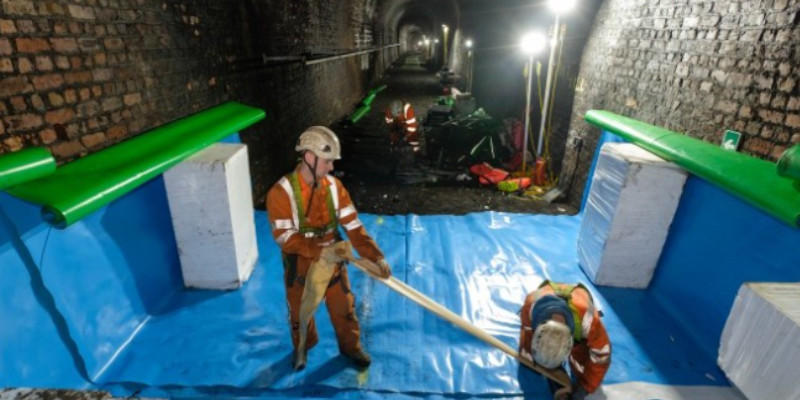
Filcor 20
source:https://cordek.com/case-study/st-margarets-head-railway-tunnel
Filcor 45

Filcor 45 maximum depth of concrete
Filcor 45 is the second lightest grade available on the list. Again, number 45 means compressive strength at 1% strain (kPa). If 100mm EPS cube is tested it will simply compress 1% of that 100mm depth.
Filcor 45 density is 20 kg/m3. Similar to Filcor 20, this is exactly how much Filcor 45 physically weights in kg per m3. It is light, quicker to install, requires no compaction and in most cases can be manually handled.
Filcor 45 is easy to operate on site by one person as its weight 20 kg per m3.
Thermal conductivity of Filcor 45 is 0.036W/mK. The lower the thermal conductivity of the Filcor the greater the material’s ability to resist heat transfer.
Filcor 45 thermal conductivity value although is considered having the middle thermal conductivity compering to other Filcor’s. For instance Filcor 160 has 0.033 W/mK. Filcor 45 is classified and calibrated to withstand concrete depth of 1800mm. It has max. allowable long term stress of 30 kN/m3. With the increase of 30kN/m3 in density, Filcor 45 creep deformation value decreases.
If the depth of Filcor required exceeds the maximum individual block depth of 1200 mm, then further layers can be added to achieve the total depth required.

Filcor 45- Declaration of Performance
Project: London
“Cordek were asked to supply Filcor Expanded Polystyrene (EPS) as a structural fill solution beneath the new landscaped area.
The challenge was to infill the existing area despite the engineering constraints associated with the occupied basement beneath. In total 185m3 of Filcor 45 and 804m3 of Filcor 70 was supplied in a variety of thicknesses, comprising of both sheets and blocks.”

Filcor 45
source:https://cordek.com/case-study/st-helens-square
Filcor 70

Filcor 70 maximum depth of concrete
Filcor 70 is the third grade available from Cordek. Figure 70 showing compressive strength at 1% strain (kPa).
Filcor 70 density is 25 kg/m3. It is considered to be a safe to handle by one man. It weights 25kg per m3.
Thermal conductivity of this void former is 0.035W/mK which puts him in middle class in terms of resistance to heat transfer.
Filcor 70 can take up to 2800mm of concrete without a fear of breaking.
Maximum allowable long term stress of this grade is 45 kN/m3.

Filcor 70- Declaration of Performance
Project: Vinci Construction France
“Cordek was requested to provide a combined ground heave and void former solution beneath the reinforced concrete slab, constructed at the base of the Jean Prouvé Tunnel Boring Machine (TBM) Launch Shaft.
To aid the installation process, it was proposed to install a single, flat layer of Cellcore HG panels to be overlaid by a profiled Filcor void former to enable construction of the slab to the appropriate depths.
In total, Cordek supplied 210m² of Cellcore 500mm HG 50/65 and 490m² of Cellcore 500mm HG 70/95 panels in addition to 260m³ of Filcor 70 FR void former, delivered to the Paris site in order to meet the customers requested delivery and installation schedules.”
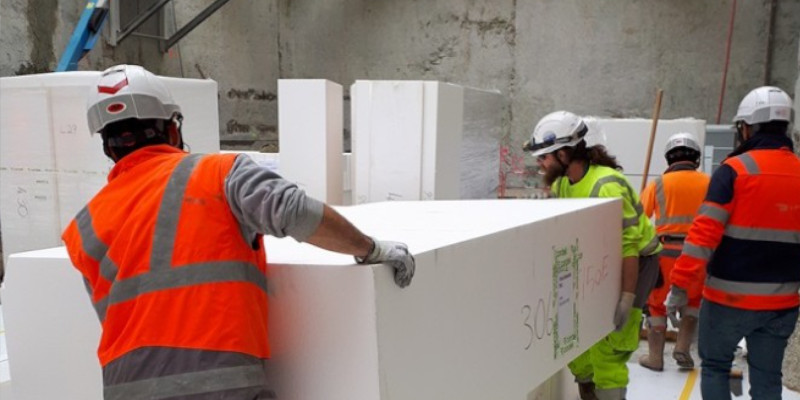
Filcor 70
source: https://cordek.com/case-study/jean-prouve-tbm-launch-shaft
Filcor 90

Filcor 90 maximum depth of concrete
Filcor 90 is the middle grade Cordek’s void former.
Filcor 90 density is 30 kg/m3. It automactically qualifiles this grade of being handled by 2 people.
Thermal conductivity of Filcor 90 is 0.034W/mK. This is the mid rate at which heat energy passes through Filcor EPS.
In terms of concrete thickness, Filcor 90 can withstand depth of 3600mm.
Similar to previous grades Filcor 90 is determined by its compressive creep too. It relates to its deformation over time.
Here, Filcor 90 has max. allowable long term stress of 60 kN/m3.
Filcor and its grade 90 have a compressive creep deformation of 2% or less after 50 years.
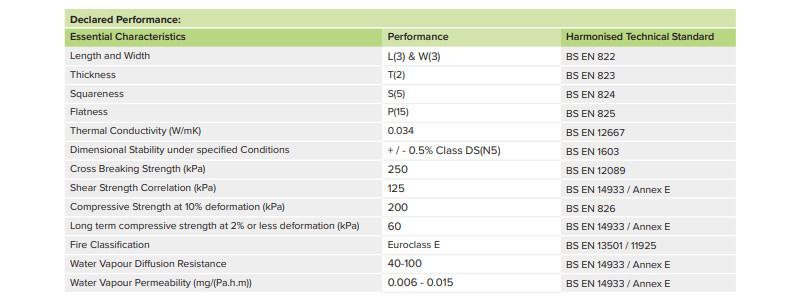
Filcor 90- Declaration of Performance
Filcor 100

Filcor 100 maximum depth of concrete
Filcor 100 is the mid range grade available from Cordek.
Filcor 100 density is 35 kg/m3. Filcor 100 physically weights 35kg per m3. It can not be handled by one man.
Thermal conductivity of Filcor 100 is 0.033W/mK. Other higher grades 120, 140, 160 and 190 have same figure.
Filcor 100 thermal conductivity value although is considered having the lowest thermal conductivity compering to other lower Filcor grades. For instance Filcor 20 has 0.038 W/mK. Filcor 100 is classified and calibrated to withstand concrete depth of 4000mm. It has max. allowable long term stress of 75 kN/m3. With the increase of 75kN/m3 in density, Filcor 100 creep deformation value decreases.

Filcor 100- Declaration of Performance
Project: M4 Junction 3-12 Motorway
“Cordek were approached by the Principal Contractor Balfour Beatty VINCI joint venture to provide a lightweight structural fill solution to be used for the embankment construction adjoining the Datchet Road Overbridge, between Junction 5 and Junction 6.
The project designers determined that Filcor 100 provided the optimum combination of lightweight properties at only 35kg/m³, with a compressive strength capable of withstanding the loadings attributable to the embankment construction with minimal deflection. Furthermore, the use of Filcor 100 within the embankment removed the requirement for compaction or earth moving plant, allowing the ambitious programme for installation to be met.
Each Filcor 100 block was supplied with the dimensions 2400mm x 1200mm x 600mm and installed in staggered layers to aid stability whilst exposed.”
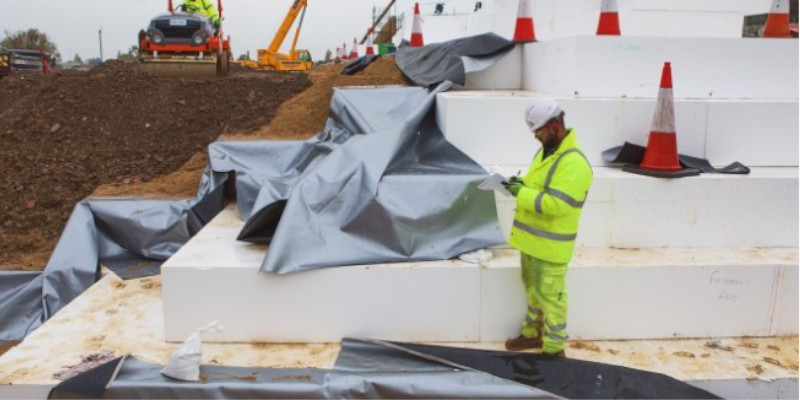
Filcor 100
source: https://cordek.com/case-study/m4-junction-3-12-motorway-upgrade
Filcor 120

Filcor 120 maximum depth of concrete
Filcor 120 density is 35 kg/m3. Filcor 120 physically weights 40kg perm3. It can not be handled by one man.
Thermal conductivity of Filcor 100 is 0.033W/mK. Other higher grades 140, 160 and 190 have same figure.
Filcor 120 thermal conductivity value although is considered having the lowest thermal conductivity compering to other lower Filcor grades. For instance Filcor 20 has 0.038 W/mK. Filcor 120 is calibrated to withstand concrete depth of 4800mm, only 800 more then lower grade 100. However, It has max. allowable long term stress of 90 kN/m3.
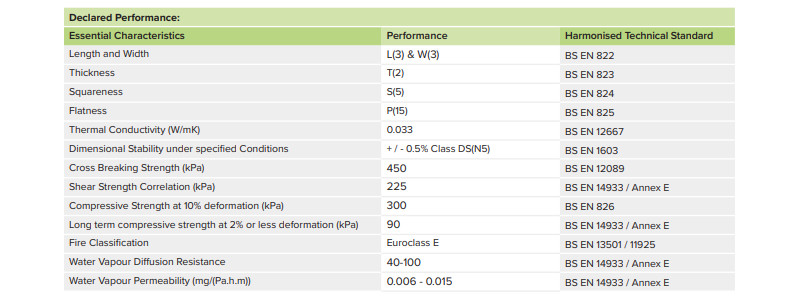
Filcor 120- Declaration of Performance
Filcor 140
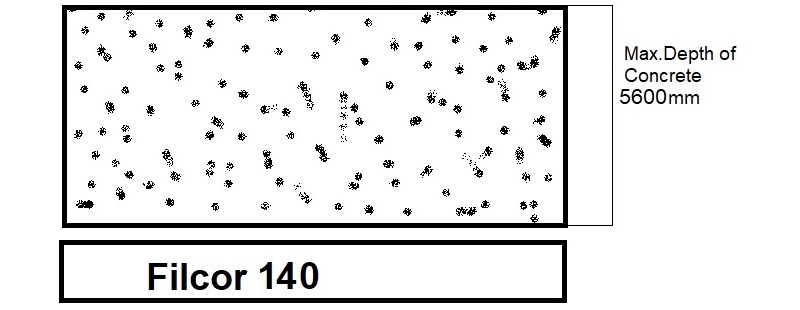
Filcor 140 maximum depth of concrete
Filcor 140 density is 45 kg/m3, it is only 10kg more then Filcor 120. Although, it weights 45 in kg per m3. For this reason it can not be handled by one man.
Thermal conductivity of Filcor 100 is 0.033W/mK. Other higher grades 160 and 190 have same figure.
Filcor 140 thermal conductivity value although is considered having the lowest thermal conductivity compering to other lower Filcor grades. For instance Filcor 45 has 0.036 W/mK. Filcor 140 is calibrated to withstand concrete depth of 5600mm. That is nearly 6m of concrete depth. However, it has max. allowable long term stress of 105 kN/m3.
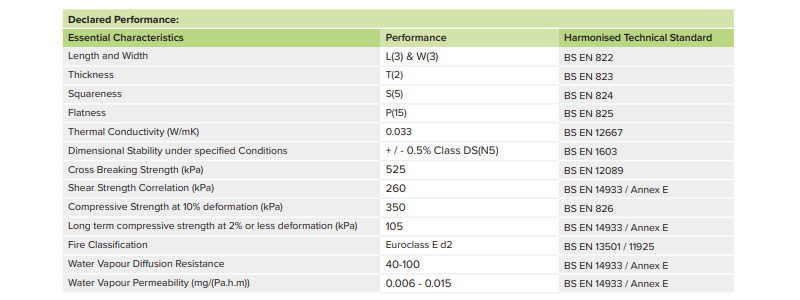
Filcor 140- Declaration of Performance
Filcor 160
Filcor 160 maximum depth of concrete
Filcor 160 density is 50 kg/m3. Only 5kg more then Filcor 140. Although, it weights 50kg per m3. It is very dense block, so you don’t want to be carrying around a 2.4 by 1.2 meter block of that. Right?
You would consider here to actually have those blocks in 0.6 or less for manual handling.
Thermal conductivity of Filcor 160 is 0.033W/mK, same as the one step higher, Filcor 190.
Filcor 160 thermal conductivity is considered having the lowest thermal conductivity compering to other lower grade Filcor’s. For instance Filcor 45 has 0.036 W/mK. Filcor 160 will take concrete depth of 6400mm.
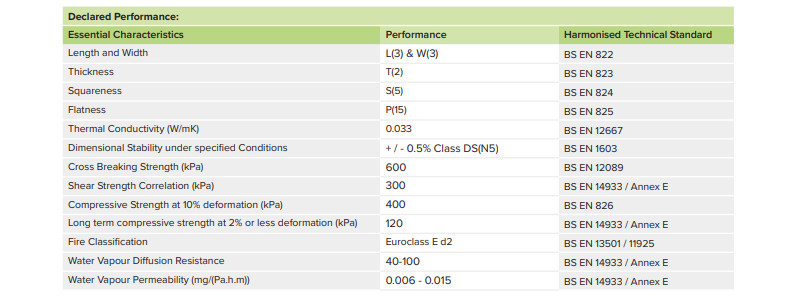
Filcor 160- Declaration of Performance
Filcor 190
Filcor 190 maximum depth of concrete
Filcor 190 density is 55 kg/m3. 40kg more then lowest Filcor 20. Although, it weights 55kg per m3. It is very dense block.
You would consider here to actually have those blocks in 0.6 for manual handling.
Thermal conductivity of Filcor 190 is 0.033W/mK.
Filcor 190 thermal conductivity is considered having the lowest thermal conductivity compering to lowest Filcor 20. For instance Filcor 20 has 0.038 W/mK. Filcor 190 will take concrete depth of 7600mm!
It is the highest grade available.
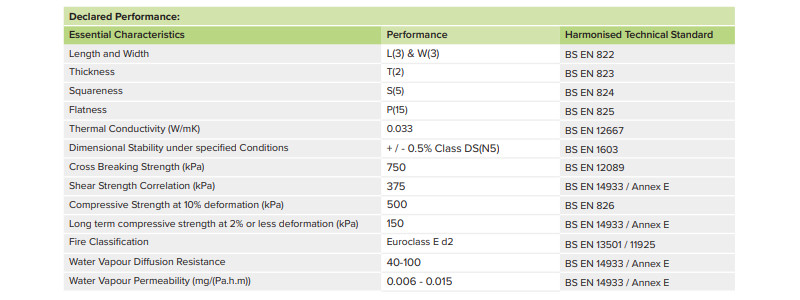
Filcor 190- Declaration of Performance
Project: London Bridge Station Redevelopment
“Two major areas of the station redevelopment, Savex East and the Oversite Slab Area required the use of a lightweight structural fill material to minimise any increase in dead weight onto the existing arch structures and to allow a track slab to be constructed above. The fill material had to be installed within the confinement of existing retaining walls, up to a maximum depth of approximately three metres. Cordek were tasked with providing a solution to 7,500m³ of lightweight structural fill encapsulated within a suitably protective membrane, within a restricted timeframe. Cordek was able to meet the design requirements by supplying 7500m³ of Filcor 100 EPS (Expanded Polystyrene) and Filcor 190 EPS blocks in depths between 25mm and 600mm. The Filcor blocks were installed in up to seven layers, with each layer positioned perpendicular to the previous one, staggering the joints, providing strength and aiding stability.”
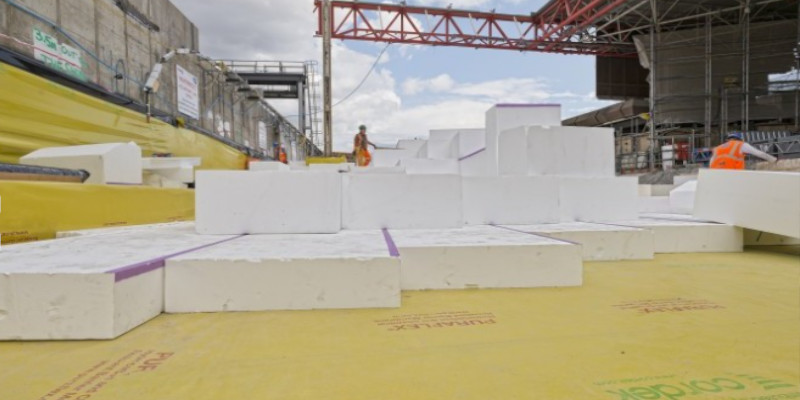
Filcor 190
source: https://cordek.com/case-study/london-bridge-station-redevelopment
Fire
When designing applications involving Filcor, it should be covered by a surface material or layer that has a suitable fire rating. Filcor has a Euroclass E rating when tested in accordance with BS EN 13501-1. Provides a high degree of insulation and has flame retardant (FR) properties.
Chemical Resistance
While Filcor is waterproof and resistant to breakdown, it is easily attacked by many organic solvents or hydrocarbons. It dissolves quickly when exposed to acetone. It will dissolve in the acetone much like sugar dissolves in hot.
Water Absorption
Filcor is not soluble in water and its closed cell structure prevents the migration of water through the mass of the material. The water absorption of Filcor is low. Although water absorption decreases as density increases.

Filcor water absorption table
Further information may be found in our Datasheet section.
Other Articles:
Filcor lightweight structural fill
Bibliography
1.cordek.com, Case ”London Bridge Station Redevelopment” accessed April 22, 2022
https://cordek.com/case-study/london-bridge-station-redevelopment
2.cordek.com, Case ”St Helen’s Square” accessed April 22, 2022
https://cordek.com/case-study/st-helens-square
3.cordek.com, Case ”M4 Junction 3-12 Motorway Upgrade” accessed April 22, 2022
https://cordek.com/case-study/m4-junction-3-12-motorway-upgrade
4.cordek.com, Case ”Jean Prouvé TBM Launch Shaft” accessed April 22, 2022
https://cordek.com/case-study/jean-prouve-tbm-launch-shaft
5.citeseerx.ist.psu.edu, Saulius VAITKUS∗ , Ivan GNIP, Vladislovas KERŠULIS, Sigitas VĖJELIS “Prediction of Creep Strain of the Expanded Polystyrene (EPS) in Long-term Compression” September 27, 2007, accessed April 22, 2022
https://citeseerx.ist.psu.edu/viewdoc/download?doi=10.1.1.588.1890&rep=rep1&type=pdf
6. bmtpc.org, “Manual for Expanded Polystyrene (EPS) Core Panel System and its field Application” June, 207, accessed April 22, 2022
https://www.bmtpc.org/DataFiles/CMS/file/PDF_Files/Manual_EPS.pdf
*All the information provided in the content published on Insulationgo blog is for informational and educational purposes only. Insulationgo LTD makes every effort to ensure the accuracy and timeliness of the content, but we do not assume any responsibility for any errors or omissions.
The information presented on this blog should not be considered as professional advice or a substitute for consulting relevant experts. Before making any purchase decisions or taking action based on the information presented here, it is strongly recommended to contact the product manufacturer directly to verify the details and ensure its suitability for your specific needs.
By using this blog, you acknowledge and agree that Insulationgo LTD shall not be held liable for any damages, losses, or inconveniences arising from the use or reliance on the information provided herein. This limitation of liability applies to all users of the blog, including but not limited to visitors, readers, and subscribers.










































































































